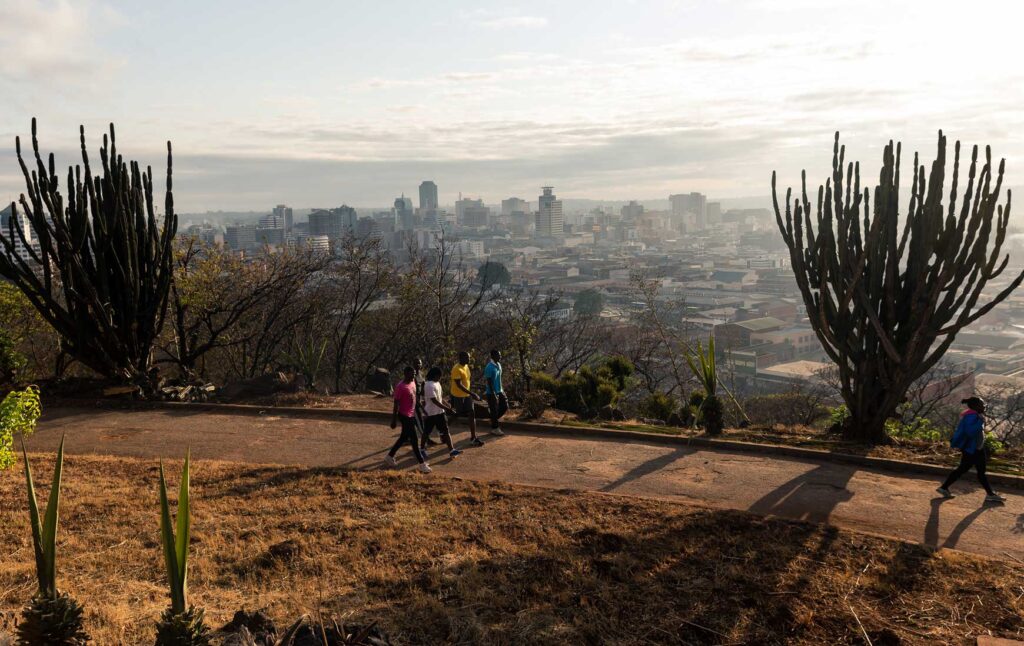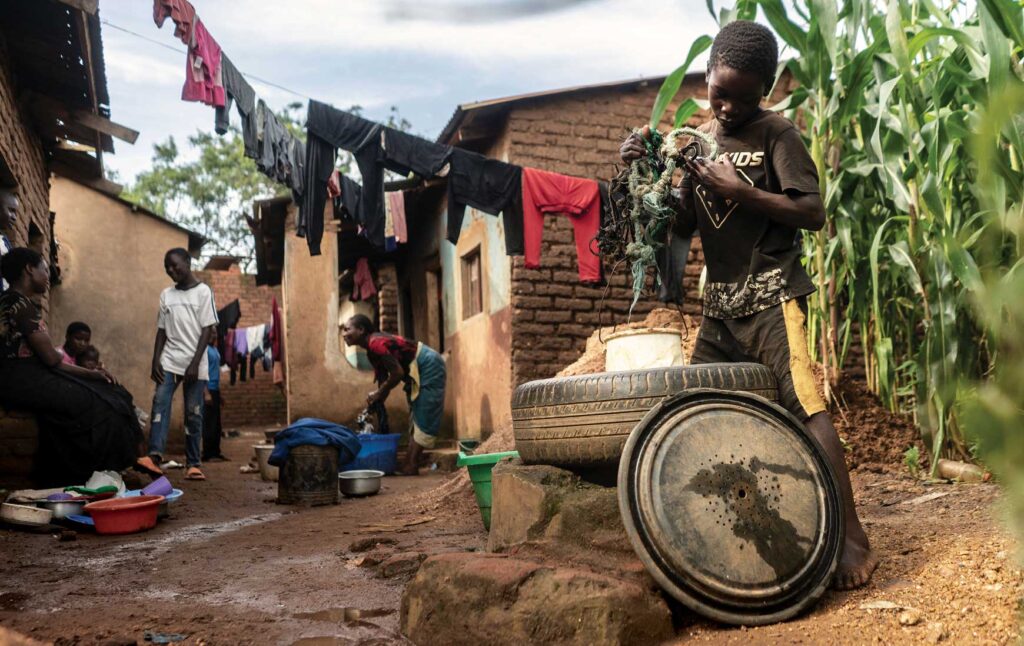“Local government” is a broad concept based on a common understanding of an administration responsible for representing the interests of citizens and enterprises located in a specific geographic area within a country. Beyond this common understanding, “local government” implies, firstly, that there is a body, typically a council, elected by citizens and, secondly, that this body includes an administration that provides services to citizens and enterprises.
In reality, local government covers a wide range of circumstances, as demonstrated in this paper, which considers five local governments (municipalities) in the SADC region. By demonstrating this variability, the paper supports the argument that the role of local government should be expanded by devolving functions from the national to the local level.

The five sample local authorities are selected from the African City Profiling project, a Good Governance Africa initiative aimed at a comparative assessment of the development impact of cities across Africa. They are primary cities in their respective counties, with their “primary” status either related to being the largest city in the country (Johannesburg in South Africa), the capital city (Lilongwe in Malawi), or both the largest city and the capital (Harare in Zimbabwe, Luanda in Angola and Lusaka in Zambia). Being cities, they are almost exclusively urban in character, with relatively large populations but with their economic circumstances varying widely, as shown in Table 1.
Table 1: Population and economy of five sample local authorities, 2024
| City | Harare | Johannesburg | Lilongwe | Luanda | Lusaka |
| Population (million) | 1.60 | 6.09 | 0.99 | 9.65 | 2.29 |
| GDP/capita (US$/cap) | 3,600 | 16,400 | 1,100 | 7,400 | 2,200 |
1. GDP is Gross Domestic Product, a measure of the economic output of the city
2. Lilongwe’s GDP per capita is a rough figure estimated from the national GDP/per capita
Four of the case study cities have a single local authority responsible for the functional metropolitan area, with the metropolitan area of Johannesburg effectively being part of the broader Gauteng metro functional area, including the cities of Tshwane and Ekurhuleni. In the case of Harare, Lusaka and Lilongwe, there is some spillover of the metro area into neighbouring municipalities, but this is not substantial. The fifth case study, Luanda, is the exception in that Luanda Province is the de facto metropolitan government and provider of urban services, with the 16 municipalities (municipos) within the metro area having minimal service provision responsibilities.
Harare, Johannesburg, Lilongwe and Lusaka all have a conventional governance arrangement in that they have elected councils responsible for representing the interests of citizens and enterprises and overseeing the administration responsible for providing services. Luanda is the exception again in that Luanda Province is run by a governor appointed by the country’s president. The municipalities do not have elected councils and are run by a municipal Administrator appointed by the provincial governor. Hence, the sub-national government in Angola has always been remote from the people.
The extent to which local authorities actually provide urban services is variable, as illustrated in Table 2.
Table 2: Organisations responsible for providing urban services in sample local authorities
| City | Harare | Johannesburg | Lilongwe | Luanda | Lusaka |
| Community services2 | Municipal | Municipal | Municipal | Province with municipal at small scale | Municipal |
| Health | Municipal | Provincial but some municipal | National & small role for municipality | Province as metro government | National |
| Education | National but some municipal | Provincial | National | Province as metro government | National |
| Water supply | Municipal | Municipal entity | Nationally owned utility | Nationally owned utility; small contactors in informal areas | Utility owned by multiple municipalities; CBOs1 in informal areas |
| Sanitation | Municipal | Municipal entity | Nationally owned utility | Province, NGOs & small contractors | Utility owned by multiple municipalities & private contractors |
| Electricity | National Utility | Municipal entity | National utility | National utility | National utility |
| Solid waste management | Municipal | Municipal entity | Municipal & private contractors | Province & private contractors | Locally owned utility & private contractors |
| Urban roads | Municipal | Municipal entity | National + municipal | Province as metro government | National + national entity + municipal |
These case studies represent a full spectrum of local government responsibilities, even when seen globally. At the one extreme is Harare, which provides a full set of urban services, including health and education, except for electricity. Johannesburg is the most infrastructure-oriented local authority, responsible for all large-scale infrastructure-intensive urban services: water supply, sanitation (primarily sewer systems), electricity, solid waste management and urban roads.
Luanda Province, acting as the government of the metropolitan area, has an unusual service provision profile in that it does not supply water and electricity but is responsible for education and health services, which are big-budget items. At the other extreme regarding service provision is Lusaka, which, while nominally responsible for multiple services, only provides community services on a significant scale in practice.
If a function is allocated to local government in legislation, the local authority is considered to be the service authority. However, there is a range of circumstances where the municipality as the authority does not actually provide the service:
- Although the function may be devolved to local government in law, responsibility is retained at the national level, as is the case with Lusaka.
- The local authority contracts out the entire service provision obligation to a corporatised entity owned by the local authority, as with Johannesburg’s water, sanitation, solid waste management and roads services, and Lusaka’s solid waste management service.
- As is the case for Lilongwe’s water supply and sanitation service, a public utility provides the service. Although the local authority is the authority, there may not be a contract with the utility, which implies that the national government imposes the arrangement.
- The local authority contracts private operators to run the service on their behalf, typically for services in informal settlements, as is the case with Luanda water supply and sanitation and solid waste in Lusaka. Or, more commonly, the private operators just fill a gap left as there is no publicly run service and households turn to private operators for water supply (Luanda), pit emptying (all cities bar Johannesburg) and solid waste collection.
The ultimate test of whether a local authority provides a service is whether expenditure on this service appears on its budget. Table 3 gives figures for budgeted expenditure for the five sample municipalities.
Table 3: Budgeted expenditure for five municipalities (US$ per capita per annum – 2023/24)
| Function | Harare | Johannesburg | Lilongwe | Luanda | Lusaka |
| Governance, administration, planning & development facilitation (GAPD) | 80.7 | 227.8 | 6.3 | 8.8 | 5.9 |
| Public order and safety | 26.0 | 26.2 | 0.18 | 0.11 | 0.81 |
| Community services | 9.6 | 16.7 | 0.52 | 0.80 | 3.62 |
| Housing1 | 10.7 | 19.3 | 0.11 | 0.01 | 0.11 |
| Health | 29.9 | 10.8 | 0.272 | 8.05 | 0.43 |
| Education | 4.6 | – | 0.302 | 14.93 | |
| Roads, drainage & public transport | 17.5 | 37.7 | 0.29 | 3.02 | 0.81 |
| Electricity distribution | – | 180.9 | 0.143 | 0.393 | |
| Water supply | 55.6 | 122.7 | 0.12 | ||
| Sanitation | 10.3 | 26.5 | 9.74 | ||
| Solid waste management | 30.9 | 36.1 | 0.86 | ||
| Total | 275.9 | 704.5 | 8.99 | 45.54 | 12.05 |
| % GAPD4 | 29% | 30% | 51% | 18% | 34% |
1. Housing typically includes facilitatory activity, not provision of dwelling units.
2. Figures for Lusaka health and education are only for maintaining schools and clinic premises.
3. Electricity figures are for street lighting only.
4. The percentage expenditure on GAPD indicates the level of administrative efficiency.
The Johannesburg budget per capita is nearly 80 times greater than that for Lilongwe and nearly 60 times bigger than for Lusaka. Even if one takes services common to all sample municipalities:
- Johannesburg’s budget per capita for governance, administration, planning, and regulation is about 20 times larger than that for Lusaka, Luanda, and Lilongwe.
- For public order, safety, and community services, the Johannesburg budget per capita is about 60 times bigger than Lilongwe’s, about 50 times that of Luanda, and 10 times bigger than that of Lusaka.
These figures illustrate the great range of services provided directly by municipalities and, by implication, the nature of local government, with Lilongwe having little in common with Johannesburg, for example.
The extent to which a local authority raises its own revenue is related to the extent to which revenue-raising powers are allocated to local government under the national fiscal framework. Then, having these powers raise the actual amount is a measure of the local authority’s capability and standing with citizens and enterprises. Revenue figures from budgets for the five sample local authorities are given in Table 4.
Table 4: Budgeted revenue for 5 local authorities (US$ per capita per annum – 2023/24)
| Harare | Jo’burg | Lilongwe | Luanda | Lusaka | |
| Property rates | 159.2 | 159.4 | 3.95 | 2.62 | 2.18 |
| Fines, licenses, penalties, levies & permits | 46.7 | 4.6 | 4.33 | 2.23 | 3.94 |
| Other non-tariff revenue | 11.6 | 35.0 | 0.85 | 3.17 | 0.41 |
| Service charges – electricity | 201.4 | ||||
| Service charges – water | 75.7 | 99.8 | 0.97 | ||
| Service charges – wastewater management | 15.3 | 68.0 | 0.97 | ||
| Service charges – solid waste management | 19.2 | 29.0 | 0.49 | ||
| Transfers for operating costs | 1.9 | 119.4 | 0.13 | 117.5 | 5.5 |
| Total | 329.7 | 716.6 | 9.26 | 128.01 | 12.05 |
| % operating transfers | 0.6% 16.7% 1.4% 91.8% 45.7% | 16.7% 16.7% 1.4% 91.8% 45.7% | 1.4% 16.7% 1.4% 91.8% 45.7% | 91.8% 16.7% 1.4% 91.8% 45.7% | 45.7% 16.7% 1.4% 91.8% 45.7% |
For Luanda, the budget figures are stated on the national budget as Luanda Province does not report financial figures separately. Further, key sources of revenue for Luanda are not collected by the province acting as the local government but are collected by a national agency. This leads to an important consideration regarding citizen’s interest in local government. If a household or enterprise pays the local authority for a service, they have greater influence over how the service is provided. In Luanda’s case, citizens’ influence over the government at the metro level is minimal.
The figures in Table 4 show the stark disparities regarding revenue available to municipalities. Harare and Lilongwe must rely almost completely on raising their own revenue, while at the other extreme, Luanda Province (as the de facto local authority) is almost completely dependent on transfers from the national fiscus, although it needs to be recognised that in Luanda’s case, the transfer is mainly to cover social services, particularly health and education.
The extent to which a local authority provides infrastructure itself is a key measure of its capability and ability to contribute to the needs of citizens and enterprises. Here again, there are great variations. Johannesburg and Harare manage their own capital works, but Johannesburg relies substantially on grants received from the national fiscus. Harare gets little assistance from the Zimbabwe government, with the result that its infrastructure is way underfunded.
Lilongwe gets some grant funding from national government and develops small-scale infrastructure, relying on national government or public utilities for major infrastructure. Lusaka has little control over capital works and relies on infrastructure-related projects managed nationally, typically with funding from international development partners. Luanda Province, acting as the metro authority, relies primarily on infrastructure developed under national programmes, but 12% of its budget is allocated to capital works.

Having control over procurement for larger infrastructure contracts is clearly an indication of local authority autonomy and must be seen as an advantage. However, it is here where the opportunities for corruption are greatest, and this calls for strong oversight of procurement processes by national governments or national regulatory agencies.
The extent to which local authorities are able to serve the interests of citizens and enterprises depends primarily on the extent to which they are allocated functions under national legislation through a process of devolution. However, based on the examples used for this article, it is evident that having the function allocated by law does not mean the local authority actually provides the service. Further, it is common practice for the actual provision of urban services to be undertaken by national utilities or contracted out to public or private entities. The relationship between local authorities and consumers of urban services is also defined by the extent to which consumers – citizens and enterprises – pay for these services, with revenue-raising ability a good measure of local authority autonomy.
The argument for the devolution of functions to local government is widely made in the literature and is applied as the norm in most parts of the world. The examples reported in this article illustrate the limited extent of devolution in Lilongwe, Lusaka and Luanda. Lilongwe and Lusaka are typical local authorities with relatively poor economies, which limits their ability to raise revenue to fund service provision. Perhaps the lack of trust by national government in their organisational capability is also a factor. Luanda, on the other hand, has a relatively strong economy, but the establishment of an elected local government with powers to raise revenue has not been backed politically.
Harare and Johannesburg both have a high level of devolution of functions. To some extent this is a historic legacy of the British system of local government, but it is also backed by legislation in the post-colonial era. Beyond this, the two municipalities face very different circumstances regarding support from national government. Johannesburg functions under a well-structured system of financial and capacity-building support from the South African government, while the Harare council gets minimal support from the Zimbabwe government and struggles to provide services effectively.
If municipal councils are to be accountable to their citizens for services, they must have the power to provide them. They also need control over the provision of capital works and appropriate revenue-raising powers to fund the provision of services. However, the case studies indicate that national financial support is probably required, even in relatively wealthy cities.

Ian Palmer
Ian Palmer is the founder of PDG, a leading development consultancy in South Africa. He has 45 years' experience in infrastructure and urban development. He remains with PDG part-time as an associate. For the past 10 years, he has undertaken academic work as an adjunct professor at the University of Cape Town, attached to the African Centre for Cities. Over the period 1996–2012, Ian was a trustee and deputy chairperson of Mvula Trust, a leading NGO in water supply and sanitation. He has been the team leader on over a hundred research and consulting projects in South Africa. Also, he has experience working in Zambia, Mozambique, Uganda, Rwanda, Ethiopia, and Kenya for various development agencies.



